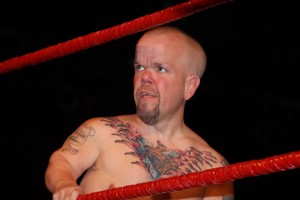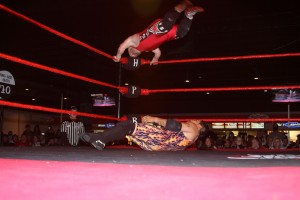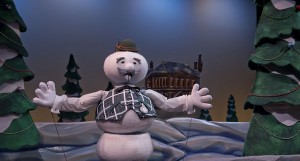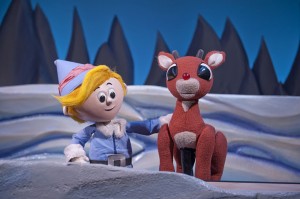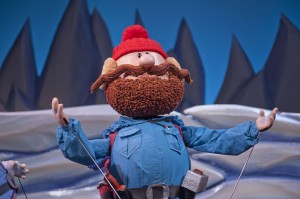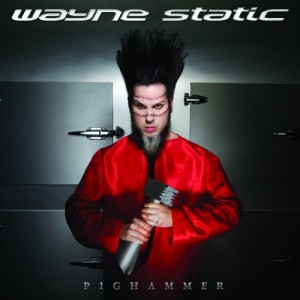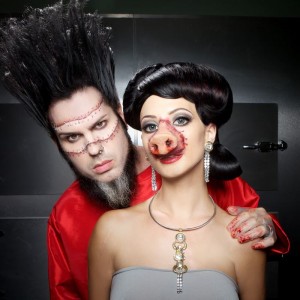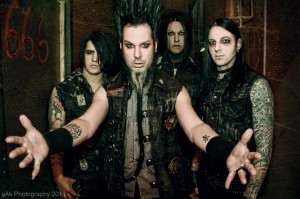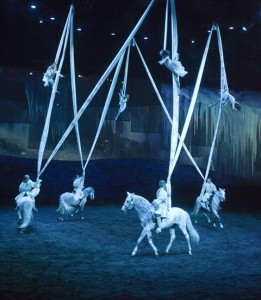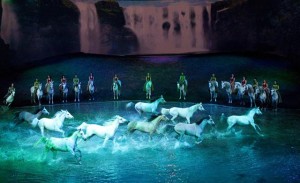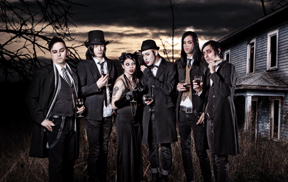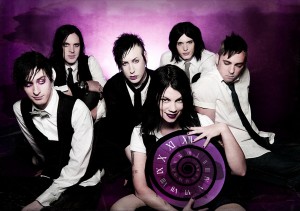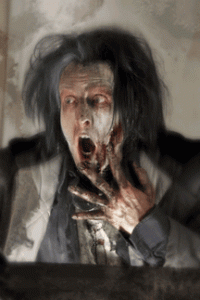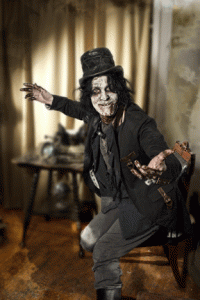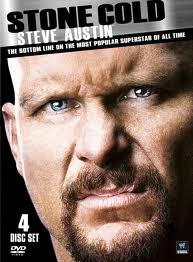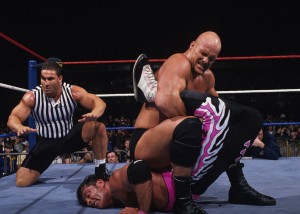By Jonathan Williams
Professional wrestlers are typically mammoth men with larger-than-life personalities who settle their differences in the ring. But when it comes to Kato, Beautiful Bobby, Turtle and the rest of the Half Pint Brawlers, the personas are just as big as (if not bigger than) their 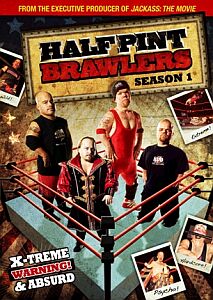 larger counterparts despite their smaller stature. Proudly calling themselves midgets, dwarves and the like, the group previously known as the Bloody Midgets doesn’t shy away from political incorrectness. As seen in the first season of their TV show on Spike (now available on DVD), there’s actually not a lot that these guys will shy away from. From pulling pint-sized pranks on each other to wrestling hardcore matches in locales such as bars, a Southern pride festival and a maximum security prison, the show captures the in-ring action as well as the behind-the-scenes workings of one of the most controversial bunch of little guys to ever grace the wrestling ring or TV screen. As leader of this group, Puppet “The Psycho Dwarf” talks to Wrestling with Pop Culture about his controversial shows and the success he has seen as a result of the TV show.
larger counterparts despite their smaller stature. Proudly calling themselves midgets, dwarves and the like, the group previously known as the Bloody Midgets doesn’t shy away from political incorrectness. As seen in the first season of their TV show on Spike (now available on DVD), there’s actually not a lot that these guys will shy away from. From pulling pint-sized pranks on each other to wrestling hardcore matches in locales such as bars, a Southern pride festival and a maximum security prison, the show captures the in-ring action as well as the behind-the-scenes workings of one of the most controversial bunch of little guys to ever grace the wrestling ring or TV screen. As leader of this group, Puppet “The Psycho Dwarf” talks to Wrestling with Pop Culture about his controversial shows and the success he has seen as a result of the TV show.
The first season of Half Pint Brawlers was unlike any other wrestling show on TV. What were some of your favorite moments from the first season?
We got to go to a lot of interesting places, especially when I got the call to go to the maximum security prison down in Louisiana. At first I was a little hesitant and I didn’t really understand why we were going down there, but when I started talking to them a little bit they told me how we could inspire the guys and how everybody has a chance to do things in life. Knowing we might inspire some of those guys to change their lives is what got me to go down there and it was quite a learning experience having the door slammed shut behind you and feeling what it’s like to be in prison. We actually ate with them in the mess hall and talked to them a little bit and I’ve got to say that’s a memory that’s always going to stick with me.
We also pulled off something that’s never been done. We closed off Bourbon Street and put a ring right in the middle of Bourbon Street in New Orleans. It was packed and the people were going crazy and that was a good time. When we went to Mexico and got to wrestle with the luchadores, which was always a dream of mine – the whole thing was an experience. That’s what’s great about this thing is I never know where this company’s going to lead, what we’re going to do, it’s something new all the time and we’re always off on new adventures, and the cameras are there to follow us.
When you went to Mexico, Half Pint Brawler Mad Mexx “The Immigration Sensation” was conspicuous by his absence. Why wasn’t he on that show?
He had a back injury and was not allowed to go. So I had to get Teo back for it. It was unfortunate for him, but he couldn’t fly at that time. He was a little disappointed.
How did things change for the Half Pint Brawlers after you did this show?
We’ve been around for 18 years, but the show definitely got us more into the mainstream. We always had the loyal underground fans that kept us alive. We’ve always had fun with it, but when the television show came out it got us a lot more mainstream into the media and into different venues. For example, we’re closing deals with Paramount Parks. We’re doing Kings Island, Worlds of Fun and this upcoming year we’re negotiating stuff with all ten of them around the country. So we’re getting bigger and better shows. As we progress and things go on, we’re kind of getting out of the bars a little bit and doing bigger venues. We’ve got some concert venues that are calling, so hopefully we can hop on some of those tours for 2012. We’re in negotiations with movie networks now, so we’re just taking it one step at a time. I just like to follow whatever direction it allows me to go and I just charge that way.
You were also in Jackass 3D. What other movie plans do you guys have?
Yeah, we were in the barroom brawl in Jackass 3D. I got into a brawl with Wee Man, then the guys came in and at first they didn’t know it was a prank. There was a police officer, the medics and all that other stuff and we would charge into bars and Wee Man was supposedly hitting on my girlfriend and we just played out that stunt there.
Doing the Half Pint Brawlers gave us a lot more opportunities, even in film work. I just got off Sam Raimi’s Oz: the Great and Powerful for two months. It’s been a wonderful year this last year and we’re just growing and expanding. We’ve also got a lot of new wrestlers coming into the Half Pint Brawlers. We’ve got Eric Smalls, J-Mazing, Ricky Benjamin and all these new talents. It’s a lot of fun and these guys are exciting, so it adds a lot more to the show.
Have any of the other guys had opportunities to do movies since the show came out?
J-Mazing was actually in the Oz film with me. He got to do the stunt work in it. Kato did some local stuff in Kansas City. Turtle is in Vegas right now doing a show at Planet Hollywood. So we’re really venturing out and doing a lot of different things. Plus we will be touring a lot in 2012, but we’re still finalizing dates now.
We usually take a break in December because what we do in October and November with the parks is four shows a day. In January we really kick in again. But we’ve been nonstop this year, doing three shows a week and traveling all year.
On the TV show we get to see a lot of what happens behind the scenes and outside the ring. How would you say the TV show compares to going to a live Half Pint Brawlers show?
I like to keep the guys on their toes, so I always try to find some fun entertainment. Being on the road as much as we are, things get really old. If I can find fun activities for them to do it keeps them fresh and shows up in the show. A lot of times we’ve been on tour, you go from one place to another, you never know where you’re at, all the hotels look the same and it gets draining. Life is short, I’m going to enjoy it so I play pranks and do fun activities as we travel.
Whatever town I’m in, I have to try the local food and that’s all I eat for the week. If I’m in Louisiana I eat gumbo, if I’m in Philadelphia I eat Philly cheesesteaks. Wherever we’re at I like to ask the locals where the local places are. I don’t like to hang out where all the tourists are, so I like to meet the people in the towns and really have fun.
Are you working on a second season of the show?
There’ll be a season two. We’re in negotiations with the networks now. It’s going to be another network and it will be on very soon.
Not long after Half Pint Brawlers came on, Hulk Hogan’s Micro Championship Wrestling show started airing on another network. How do you think that show compares to your show?
To tell you the truth they’re God awful. They’re not wrestlers. They’re a lot of little guys that actually tried to work for me, but they really wouldn’t train. It’s like a tall guy saying he’s a basketball player because he’s tall. A lot of these guys, because they’re small or midgets or dwarves or whatever, they just want to call themselves wrestlers because they spent two hours in a ring. You see how bad they are on the show. They’re not wrestlers. It’s an insult to the industry. If they’re not going to train, not only are they going to hurt themselves, they’re going to hurt somebody else. And it’s not going to be one of my Brawlers. They can hurt themselves if they want to. If Hulk Hogan wants to be responsible for that by putting them out there without training – you see it on the show, they admit it straight out – it’s digusting. It’s a weak show. [Eric] Bischoff and Hogan knew that I was doing this show when we were working with TNA and they tried to copy it. You can imitate, but you can’t duplicate us.
For more information, go to www.halfpintbrawlers.com.

